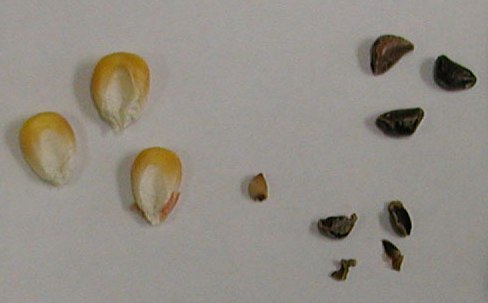Headed out on my bike ride this morning, I spotted our neighbor, Farmer John, in the front yard working on his food patch, and rolled up on the sidewalk to chat. It’s a lovely little garden – big robust tomatoes, some melons and a couple of rows of big, healthy-looking corn. Lissa and I have been enjoying watching it rise all spring and summer, watching John lovingly tending it. But when I stopped to talk this morning, John was perplexed.
The corn stalks look great, with big tassels and leaves a sheen of green, but the ears just weren’t coming on very well. He pulled one off to show me, peeling back the husk to reveal a pretty anemic-looking ear of corn.
It’s a modern breed, sweet (he gave me a bite), but the kernels just weren’t developing the way he hoped. He thought maybe it wasn’t getting enough water, or maybe something wrong with the seeds he used. Hard to know.
We humans have been doing maize here for a long time. Old spindly dried remnants thousands of years old have been found in Tularosa Cave, for example. It’s interesting to think about what Farmer John’s frustration at a bad corn crop might have felt like back in the day, when it would have been his family’s primary source of food for the coming winter.

